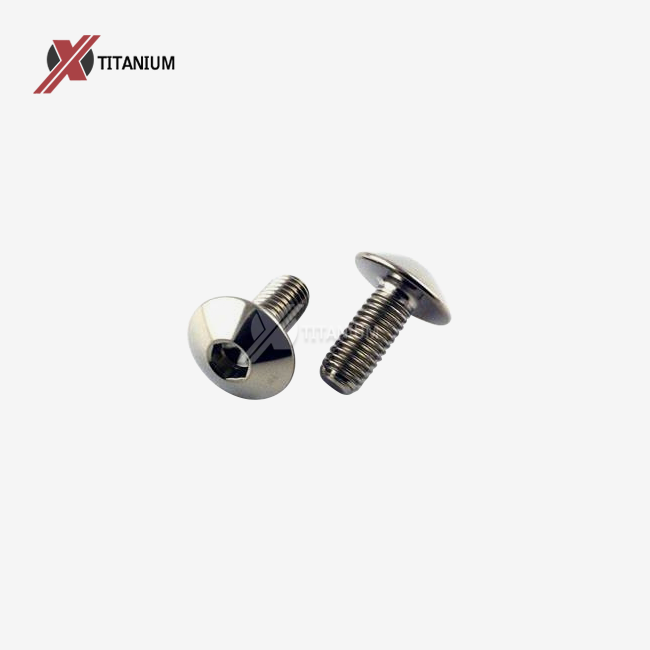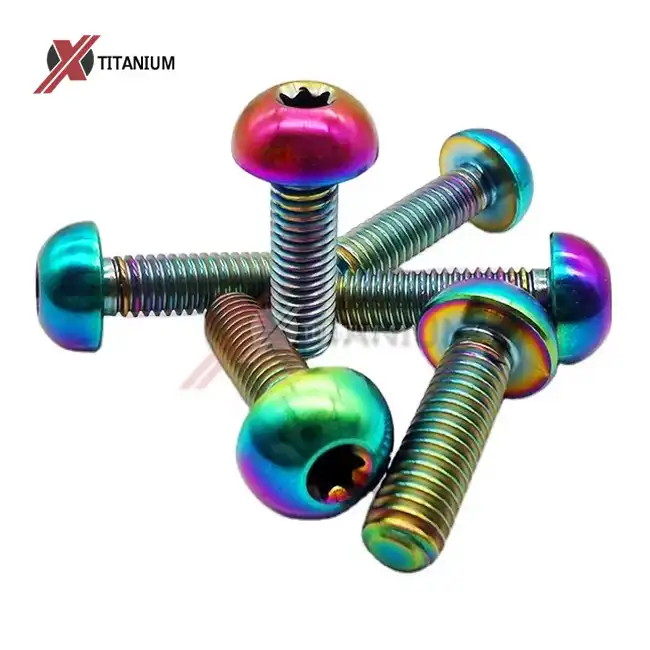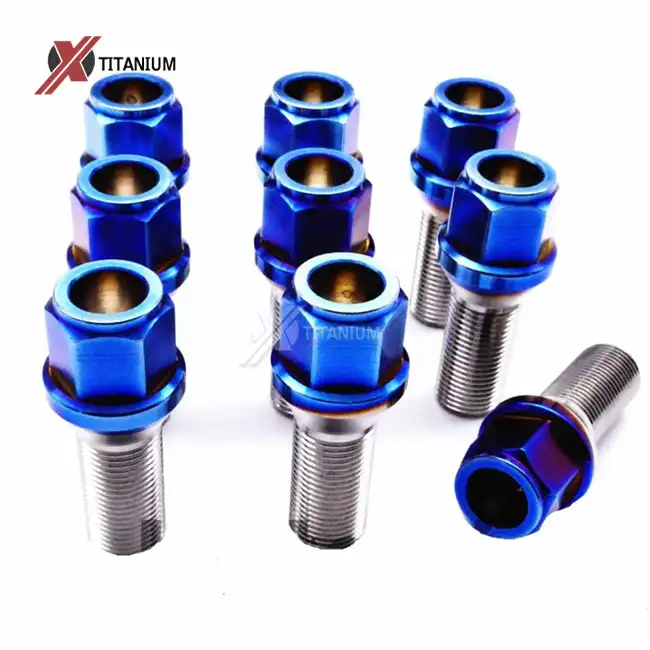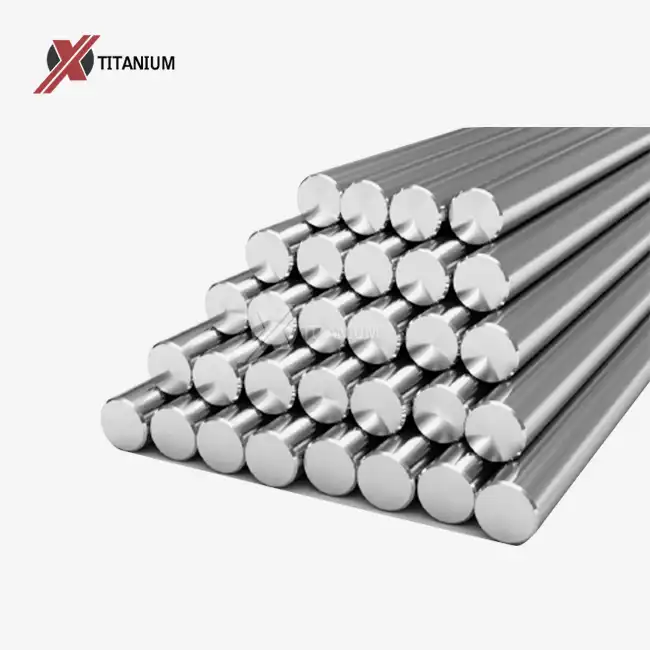The Unique Properties of Titanium Fairing Bolts in Aerospace Applications
Exceptional Strength-to-Weight Ratio
Titanium fairing bolts have emerged as a game-changer in spacecraft design due to their remarkable strength-to-weight ratio. These fasteners boast a density that's approximately 40% lower than steel, yet they maintain comparable or even superior strength characteristics. This unique property allows aerospace engineers to significantly reduce the overall mass of spacecraft without compromising structural integrity.
The lightweight nature of titanium fairing bolts translates directly into fuel savings and increased payload capacity. Every gram saved in the construction of a spacecraft means more room for scientific instruments, communication equipment, or additional fuel. This weight reduction is particularly crucial in the aerospace industry, where launch costs are calculated per kilogram of payload.
Superior Corrosion Resistance
Another pivotal advantage of titanium fairing bolts is their exceptional resistance to corrosion. In the harsh environment of space, where extreme temperature fluctuations and exposure to various forms of radiation are common, corrosion resistance is paramount. Titanium naturally forms a protective oxide layer when exposed to oxygen, making it highly resistant to corrosion from various chemicals and environmental factors.
This innate corrosion resistance ensures that titanium fairing bolts maintain their structural integrity over extended periods, even under the most challenging conditions. As a result, spacecraft equipped with these bolts require less maintenance and have a longer operational lifespan, making them more cost-effective and reliable for long-duration space missions.
Thermal Stability and Low Thermal Expansion
The thermal properties of titanium fairing bolts further contribute to their suitability for spacecraft design. Titanium exhibits excellent thermal stability across a wide range of temperatures, from the extreme cold of deep space to the intense heat generated during atmospheric re-entry. This stability ensures that the bolts maintain their strength and structural properties regardless of temperature fluctuations.
Moreover, titanium has a relatively low coefficient of thermal expansion compared to many other metals. This characteristic is crucial in spacecraft design, as it minimizes thermal stress and potential misalignments in the structure during temperature changes. The low thermal expansion of titanium fairing bolts helps maintain the precise geometry of spacecraft components, ensuring optimal performance of sensitive instruments and equipment.
Advancements in Manufacturing Techniques for Titanium Fairing Bolts
Precision CNC Machining
The production of titanium fairing bolts has been significantly enhanced by advancements in Computer Numerical Control (CNC) machining technology. Modern CNC machines can achieve unprecedented levels of precision and consistency in manufacturing these critical components. This high level of accuracy ensures that each bolt meets the exact specifications required for aerospace applications, where even the slightest deviation can have significant consequences.
Precision CNC machining allows for the creation of complex geometries and thread profiles that optimize the performance of titanium fairing bolts. These advanced manufacturing techniques enable the production of bolts with improved stress distribution, reduced weight, and enhanced fatigue resistance. The ability to consistently produce high-quality titanium fairing bolts has been instrumental in their widespread adoption in spacecraft design.
Advanced Surface Treatments
To further enhance the properties of titanium fairing bolts, various advanced surface treatments have been developed. Anodizing, for instance, can increase the corrosion resistance and wear resistance of the bolts while also allowing for color coding to aid in assembly and identification. Other treatments, such as nitriding or Physical Vapor Deposition (PVD) coatings, can significantly improve the hardness and wear resistance of the bolt surface.
These surface treatments not only enhance the performance characteristics of titanium fairing bolts but also contribute to their longevity and reliability in space applications. The ability to tailor the surface properties of these fasteners allows engineers to optimize them for specific mission requirements, further expanding their utility in spacecraft design.
Additive Manufacturing and 3D Printing
The emergence of additive manufacturing techniques, particularly 3D printing with titanium alloys, has opened up new possibilities in the design and production of titanium fairing bolts. These advanced manufacturing methods allow for the creation of complex internal structures and optimized geometries that would be impossible or impractical to achieve through traditional machining processes.
3D-printed titanium fairing bolts can be designed with internal lattice structures or honeycomb patterns that further reduce weight while maintaining strength. Additionally, additive manufacturing enables rapid prototyping and iteration of bolt designs, accelerating the development process for new spacecraft components. As this technology continues to mature, it promises to revolutionize the production of titanium fairing bolts and other critical aerospace components.
The Impact of Titanium Fairing Bolts on Spacecraft Performance and Reliability
Enhanced Structural Integrity
The implementation of titanium fairing bolts in spacecraft design has led to significant improvements in overall structural integrity. The superior strength-to-weight ratio of these fasteners allows engineers to create more robust connections between spacecraft components without incurring a weight penalty. This enhanced structural integrity translates into improved reliability and safety, particularly during critical phases of space missions such as launch and re-entry.
Titanium fairing bolts also exhibit excellent fatigue resistance, which is crucial for spacecraft that must endure repeated stress cycles during their operational lifetime. The ability to withstand these cyclic loads without degradation ensures that the structural integrity of the spacecraft is maintained over extended periods, reducing the risk of failure and extending the service life of the vehicle.
Improved Payload Capacity and Fuel Efficiency
One of the most significant impacts of titanium fairing bolts on spacecraft performance is the increase in payload capacity. By reducing the weight of fasteners and structural components, engineers can allocate more mass to scientific instruments, communication equipment, or additional fuel. This increased payload capacity translates directly into enhanced mission capabilities and the ability to carry out more complex and ambitious space exploration projects.
Furthermore, the weight savings achieved through the use of titanium fairing bolts contribute to improved fuel efficiency. In space missions, every gram of weight saved in the spacecraft structure means less fuel required for propulsion and maneuvering. This increased fuel efficiency can extend the range of spacecraft, allow for longer mission durations, or enable more frequent course corrections and orbital adjustments.
Enhanced Thermal Management
The warm properties of titanium fairing jolts play a significant part in the by and large warm administration of shuttle. Their moo warm conductivity makes a difference to minimize warm exchange between diverse components, which is especially critical in keeping up steady temperatures for delicate electronic gear and logical disobedient.
Additionally, the low coefficient of thermal expansion of titanium helps to reduce thermal stresses in the spacecraft structure. This property is especially valuable in applications where precise alignment of components is critical, such as in optical systems or communication antennas. By minimizing thermal distortion, titanium fairing bolts contribute to the consistent and reliable performance of spacecraft systems across a wide range of operating temperatures.
Long-Term Cost Savings
Whereas titanium fairing jolts may have a higher starting fetched compared to conventional latches, their utilize in shuttle plan frequently comes about in noteworthy long-term fetched reserve funds. The expanded benefit life, diminished upkeep necessities, and made strides unwavering quality of shuttle prepared with titanium fairing jolts can lead to significant decreases in lifecycle costs.
Moreover, the weight savings achieved through the use of these advanced fasteners can result in lower launch costs and increased mission flexibility. The ability to launch heavier payloads or reduce the size of launch vehicles can have far-reaching economic implications for space programs and commercial satellite operators.
Conclusion
Titanium fairing bolts have indeed revolutionized spacecraft design, offering a unique combination of strength, lightweight properties, and corrosion resistance that has enabled significant advancements in space technology. From enhancing structural integrity to improving payload capacity and fuel efficiency, these advanced fasteners have played a crucial role in pushing the boundaries of space exploration.
As manufacturing techniques continue to evolve and new applications are discovered, the importance of titanium fairing bolts in aerospace engineering is likely to grow. Their impact extends beyond individual components, influencing the overall design philosophy of spacecraft and enabling more ambitious and efficient space missions.
For those interested in learning more about titanium fairing bolts and their applications in aerospace and other industries, please contact us at info@cltifastener.com or djy6580@aliyun.com. Our team of experts is ready to provide detailed information and support for your specific needs in titanium fastener solutions.




